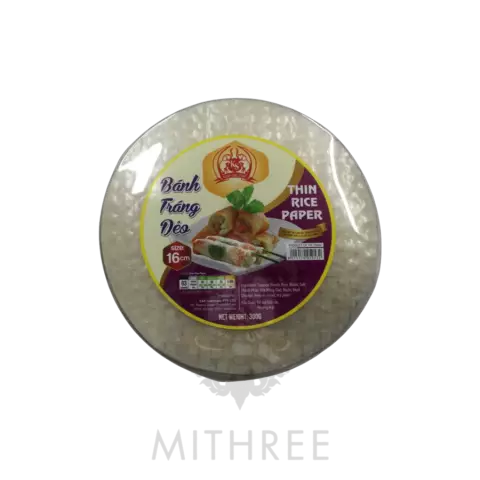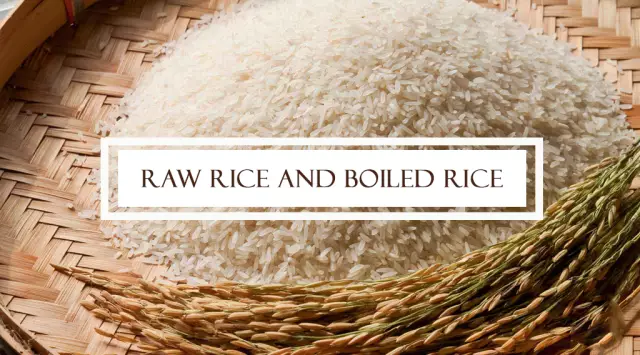- Author Rachel Wainwright [email protected].
- Public 2023-12-15 07:39.
- Last modified 2025-11-02 20:14.
Rice paper
Description of rice paper

Rice paper is a thin sheet of dried rice dough in a round or square shape. The most valuable is the very thin rice paper, made in accordance with the culinary traditions of China.
Rice paper is the basis of many spring roll recipes, a traditional Asian dish. Due to the fact that the paper has a neutral, slightly sweetish taste, it goes well with almost any product.
Composition and taste of rice paper
Rice paper is 90% rice flour. In addition, it contains water and salt.
Unlike rice, which contains simple carbohydrates, paper contains complex carbohydrates. However, rice paper is not considered a slim figure food because it contains no more than 1% DV of carbohydrates.
Also, the composition of rice paper contains a small amount of vitamin B6, and of valuable trace elements - phosphorus.
Although rice paper has no particular nutritional value, it is very popular in Asian countries as a basis for preparing gluten-free meals, which is especially important for allergy sufferers. In addition, the advantage of paper is that it contains virtually no fat.
How to use rice paper
Rice paper should be handled very carefully so that it does not crumble or break off at the edges.
In order for a sheet of rice paper to turn into a matte translucent "pancake", it should be immersed in hot water for a few seconds, and then soaked on a towel for one minute. The filling is added to the softened sheet and wrapped like Russian pancakes.
Rice paper pancakes are popular in Australia, where vegetables and herbs are traditionally used as toppings. In America and many other countries, rice paper dishes are known as spring rolls.
The birthplace of the tradition of making spring rolls (Harumaki) is China, where this dish is one of the most common. In addition, Harumaki refers to traditional New Year's dishes, and it got its name due to the fact that the New Year in China begins in early spring. In China, there is even a belief that each eaten spring roll brings the onset of spring closer, and in addition drives away troubles and troubles.
To prepare Harumaki, a lettuce is placed in the center of the rice paper, after which rice noodles, carrots, shrimps, omelet strips, cucumber or any other filling to your liking are added. After filling, the sides of the sheet of paper should be wrapped in an envelope and rolled up.
Rice paper rolls, depending on the filling, are served immediately or fried in oil, while the paper becomes crispy and retains its shape.
Despite the fact that rice paper leaves a lot of room for culinary delights, there are some well-established traditions. The filling according to a traditional Chinese recipe must contain at least five spices. Also, residents of Asian countries, as a rule, add various sauces (fish, soy, oyster), wine and lemon or lime juice to the filling.
So, the sauce for making rice pancakes with salmon contains soy sauce, fish broth, sugar, dry white wine and sweet sherry. In addition to the fillet of fresh salmon, add bell peppers, onions, a clove of garlic, wasabi paste, orange, lime or lemon, parsley, fresh ginger and salt to the filling.
It is best known how to use rice paper, not only in China, but also in the Maldives, Vietnam, Thailand, the island of Sri Lanka and other Asian countries.

In contrast to these countries, where they like very spicy dishes with an abundant amount of spices and spices, in Europe, rice paper is used, as a rule, with other fillings. You can prepare from it:
- Lazy baklava - sweet dessert with nuts and honey;
- Panforte is a traditional Italian sweet with lots of nuts and dried fruits;
- Rolls with Chinese cabbage, smoked sausage and sesame seeds;
- Fruit spring rolls with soft cheese, fruit and honey-vanilla sauce;
- Rolls with chicken, mushrooms and herbs.
Rice paper is appreciated not only for its functionality, but also for the incredibly appetizing look that the almost transparent sheets give the filling.
Also, rice paper can be used as a low-calorie alternative:
- Lettuce and cabbage leaves, which have a more pronounced taste;
- Grape leaves with a denser texture;
- Nori (an edible species of red seaweed widely used to make sushi), similar in texture, but slightly salty in taste.
Contraindications
Since rice paper is usually eaten in small quantities, no particular contraindications have been identified for the use of this product.
Found a mistake in the text? Select it and press Ctrl + Enter.






